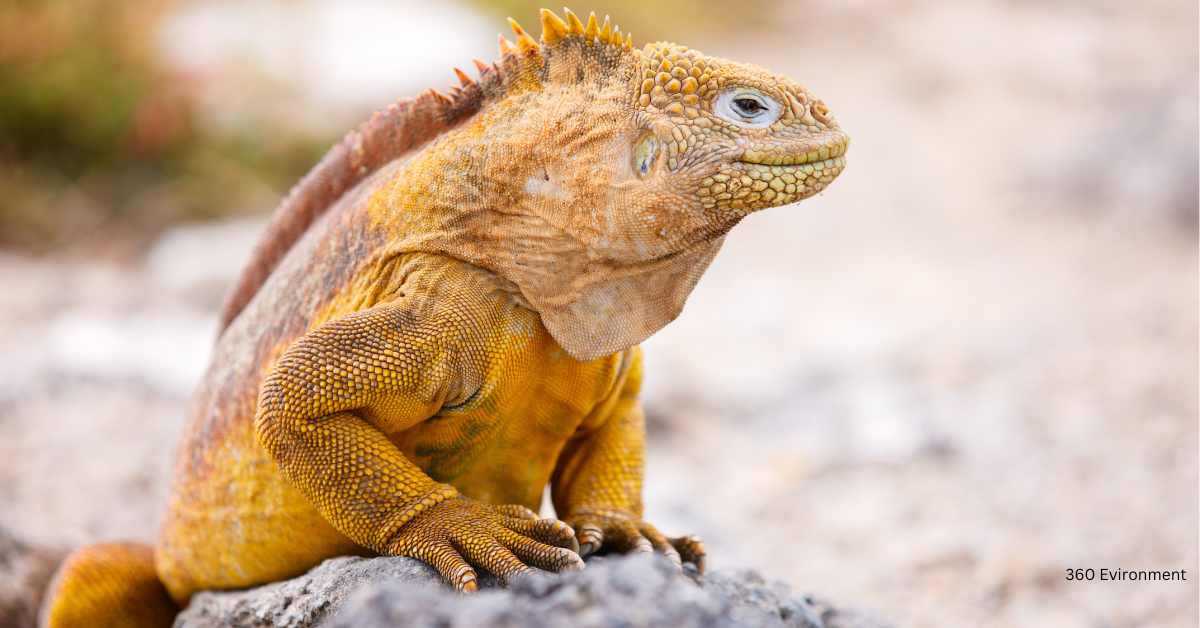Introduction
The orange iguana is an intriguing and rare variation of the common green iguana (Iguana iguana), primarily known for its striking color. While the green iguana is widespread and recognized for its characteristic green hue, the orange iguana captures attention with its brilliant orange pigmentation. Found mostly in tropical and subtropical environments, iguanas, including the orange morph, play significant roles in their ecosystems, contributing to biodiversity and maintaining the balance of local fauna and flora.
This article delves into the world of the orange iguana, exploring its unique traits, environmental significance, and the conservation efforts needed to protect its dwindling population. We’ll also examine how the orange iguana adapts to its surroundings and what makes it such an essential part of its ecosystem.
What Is an Orange Iguana?

1. A Rare Color Morph
The term “orange iguana” doesn’t refer to a separate species but rather to a rare color morph of the green iguana, Iguana iguana. This particular morph can display vivid shades of orange, especially during the breeding season, when males exhibit their brightest colors to attract females. The orange coloration can be influenced by environmental factors, such as temperature, and by the iguana’s genetic makeup.
Key Features:
- The orange coloration is most prominent in males, especially during breeding seasons.
- Females may also exhibit a lighter orange hue but are typically more muted in color.
- The intensity of the orange varies between individuals and can be influenced by diet, health, and environmental conditions.
2. Orange Iguana vs. Green Iguana
While they share the same species, the orange iguana differs from the standard green iguana not only in color but also in behavior during certain periods. Orange coloration is primarily associated with dominant males, signaling their readiness to mate and their territorial status. The color change can be temporary, often intensifying during the mating season and fading afterward.
Habitat and Distribution of the Orange Iguana
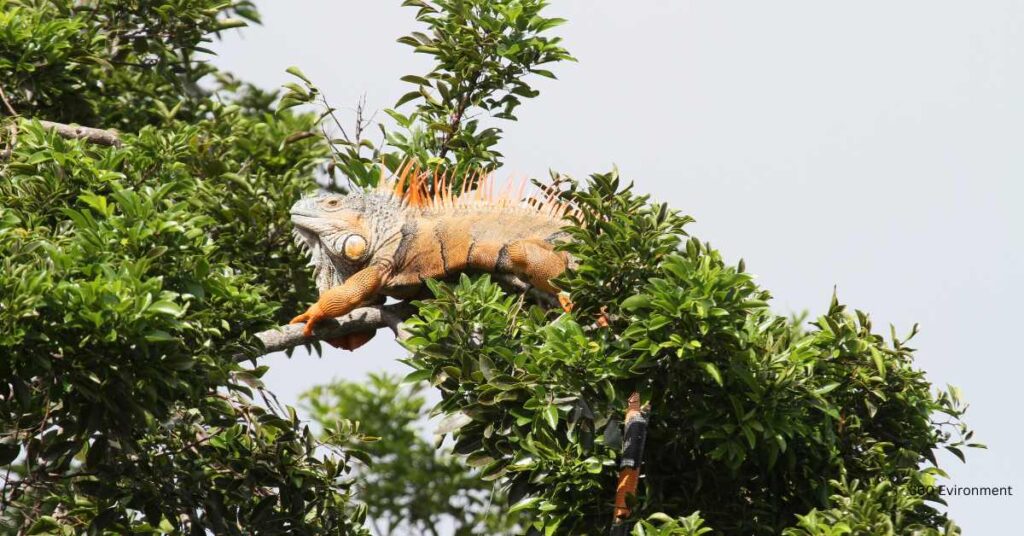
1. Tropical and Subtropical Regions
Like their green counterparts, orange iguanas are typically found in tropical and subtropical regions, primarily in Central and South America. Their natural habitats include rainforests, mangrove swamps, and riverbanks, where they can bask in the sun while also staying close to water sources. These environments provide the ideal combination of warmth, humidity, and food sources for iguanas.
Iguanas, including the orange morph, are arboreal, spending much of their time in trees. They rely on the dense foliage of the rainforest canopy for protection from predators and as a source of food. Orange iguanas are often spotted basking on tree branches or rocks to absorb the sun’s heat, which is essential for regulating their body temperature.
Key Habitats:
- Rainforests and tropical woodlands
- Mangrove swamps and riverbanks
- Coastal areas in Central and South America
2. Adaptations to Their Environment
Orange iguanas, like all iguanas, are ectothermic, meaning they rely on external sources of heat to regulate their body temperature. Basking in the sun is essential for their survival, allowing them to warm up and become active. In cooler conditions, iguanas become sluggish and are more vulnerable to predators.
These reptiles have sharp claws and a strong tail that aids in climbing trees, as well as escaping threats. Their diet consists primarily of leaves, flowers, and fruits, making them folivores. They play a crucial role in their ecosystems by helping control vegetation growth and dispersing seeds through their droppings.
Ecological Role of the Orange Iguana

1. Contributors to Biodiversity
The orange iguana, as part of the broader green iguana population, plays a crucial role in maintaining the balance of its ecosystem. By feeding on a variety of plants, iguanas help regulate vegetation growth in their habitats. Their folivorous diet consists mainly of leaves, flowers, and fruits, which can prevent certain plant species from dominating the landscape and allow for greater biodiversity.
In addition to controlling vegetation, iguanas act as seed dispersers. After consuming fruits, they pass seeds through their digestive systems and disperse them in different areas, aiding in the regeneration of forests and plant diversity. This role is particularly important in maintaining the health of tropical and subtropical ecosystems, where plant life forms the foundation of the food chain.
2. Prey for Predators
Though they are relatively large reptiles, orange iguanas are preyed upon by a variety of animals, especially when they are young and more vulnerable. Birds of prey, snakes, and larger mammals often hunt iguanas, making them an integral part of the food web. Their presence supports predator populations, contributing to the overall balance of their ecosystems.
Common Predators of Iguanas:
- Birds of prey, such as hawks and eagles
- Large snakes, including boa constrictors
- Mammals like jaguars and raccoons
Threats to the Orange Iguana Population
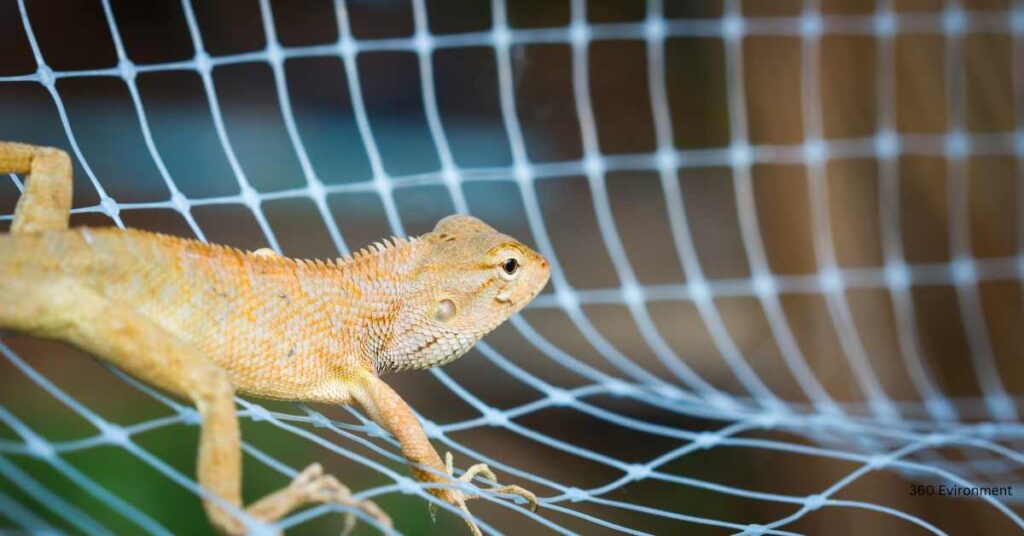
1. Habitat Loss
One of the most significant threats to orange iguanas and iguanas in general is habitat destruction. As human populations expand into tropical regions, deforestation, agriculture, and urbanization have led to the degradation of natural habitats. Rainforests, mangroves, and riverbanks are often cleared for farming or development, reducing the available habitat for iguanas.
The loss of trees and vegetation not only limits the iguana’s food sources but also removes their primary means of shelter. Without access to the forest canopy, where they spend most of their time, iguanas become more vulnerable to predators and environmental stressors.
2. Climate Change and Environmental Impact
Climate change poses another critical threat to orange iguanas. Rising temperatures and changes in precipitation patterns can affect the availability of food and water, as well as disrupt the delicate balance of tropical ecosystems. Prolonged droughts or unseasonal rains can lead to a shortage of the fruits and leaves that iguanas rely on for sustenance.
In addition, extreme weather events, such as hurricanes and tropical storms, can devastate iguana habitats. Storms can destroy trees, flood riverbanks, and displace iguana populations, making it difficult for them to find food and shelter in the aftermath.
3. Hunting and the Pet Trade
Iguanas are often hunted for food in some regions, and they are also collected for the exotic pet trade. Although the orange iguana’s striking color makes it highly desirable to pet owners, the capture and sale of wild iguanas have led to a decline in their populations. The pet trade, combined with habitat loss, puts significant pressure on wild iguana populations.
In many cases, iguanas are taken from the wild before they reach maturity, which negatively impacts their ability to reproduce and sustain populations in the wild. Additionally, when iguanas are removed from their natural habitats and sold as pets, they often face poor conditions, inadequate care, and shortened lifespans.
Conservation Efforts for the Orange Iguana
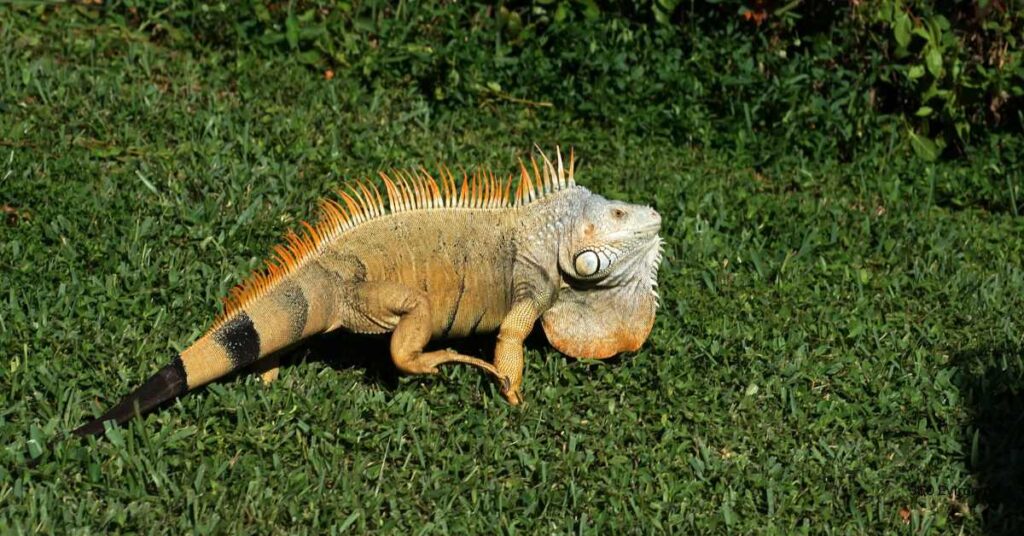
1. Habitat Protection
Conservation organizations and governments in Central and South America have taken steps to protect the habitats of iguanas and other wildlife. Efforts to establish protected areas, such as national parks and wildlife reserves, aim to preserve the rainforests, mangroves, and river ecosystems that iguanas depend on.
In addition, reforestation programs are being implemented to restore areas that have been deforested or degraded by human activity. By planting native trees and vegetation, these programs help create new habitats for iguanas and other species, supporting biodiversity and ecosystem health.
2. Climate Change Mitigation
Addressing the impacts of climate change on iguana populations requires global cooperation to reduce greenhouse gas emissions and slow the warming of the planet. Protecting and restoring tropical forests, which act as carbon sinks, is one of the most effective ways to combat climate change and safeguard the habitats of species like the orange iguana.
Conservation organizations are also working to build resilience in tropical ecosystems by promoting sustainable land use practices, such as agroforestry and eco-tourism, which help preserve natural habitats while providing economic benefits to local communities.
3. Regulation of the Pet Trade
To combat the illegal capture and sale of wild iguanas, stricter regulations are needed in the pet trade. Governments and wildlife protection organizations are working to enforce laws that prevent the poaching of iguanas and ensure that only captive-bred individuals are sold as pets.
Public education is also essential in reducing the demand for wild-caught iguanas. By raising awareness about the importance of protecting wild populations and encouraging responsible pet ownership, conservation efforts can help reduce the pressure on iguana populations in the wild.
The Fascination with the Orange Iguana
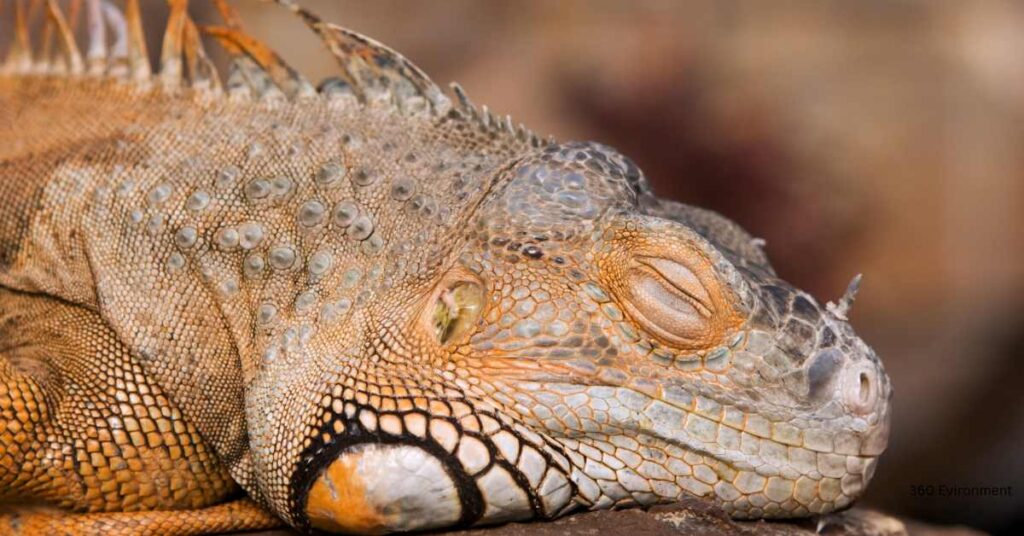
1. Cultural Significance
In many cultures, iguanas have symbolic meanings and are associated with strength, resilience, and adaptability. The vibrant orange color of the orange iguana, in particular, has made it a subject of fascination for wildlife enthusiasts, photographers, and artists. In regions where iguanas are native, they are often featured in local folklore and myths.
The unique appearance of the orange iguana also makes it a popular subject for eco-tourism. Visitors to tropical regions are often eager to see these striking reptiles in their natural habitats, which can promote conservation and support local economies.
2. Photography and Wildlife Observation
The orange iguana’s vivid colors and slow, deliberate movements make it an attractive subject for wildlife photographers and nature lovers. Documenting these reptiles in their natural environment helps raise awareness about their beauty and the importance of preserving their habitats.
Eco-tourism initiatives that focus on wildlife observation, including iguana-spotting tours, can provide a sustainable source of income for local communities while also encouraging conservation efforts. By showcasing the beauty and uniqueness of species like the orange iguana, eco-tourism can inspire people to protect the natural world.
Conclusion
The orange iguana is not only a rare and visually stunning reptile but also an important part of the ecosystems it inhabits. As a color morph of the green iguana, this unique creature plays a vital role in maintaining biodiversity, controlling vegetation growth, and supporting predator populations. However, like many species in the wild, the orange iguana faces significant threats from habitat loss, climate change, and human activity.
Conservation efforts, such as habitat protection, climate change mitigation, and stricter regulations on the pet trade, are essential to ensuring the survival of the orange iguana and other wildlife. By protecting the habitats that these creatures call home and raising awareness about their ecological significance, we can help preserve the beauty and biodiversity of our planet for future generations.
Read More: African Animals with Horns: Icons of the Continent

